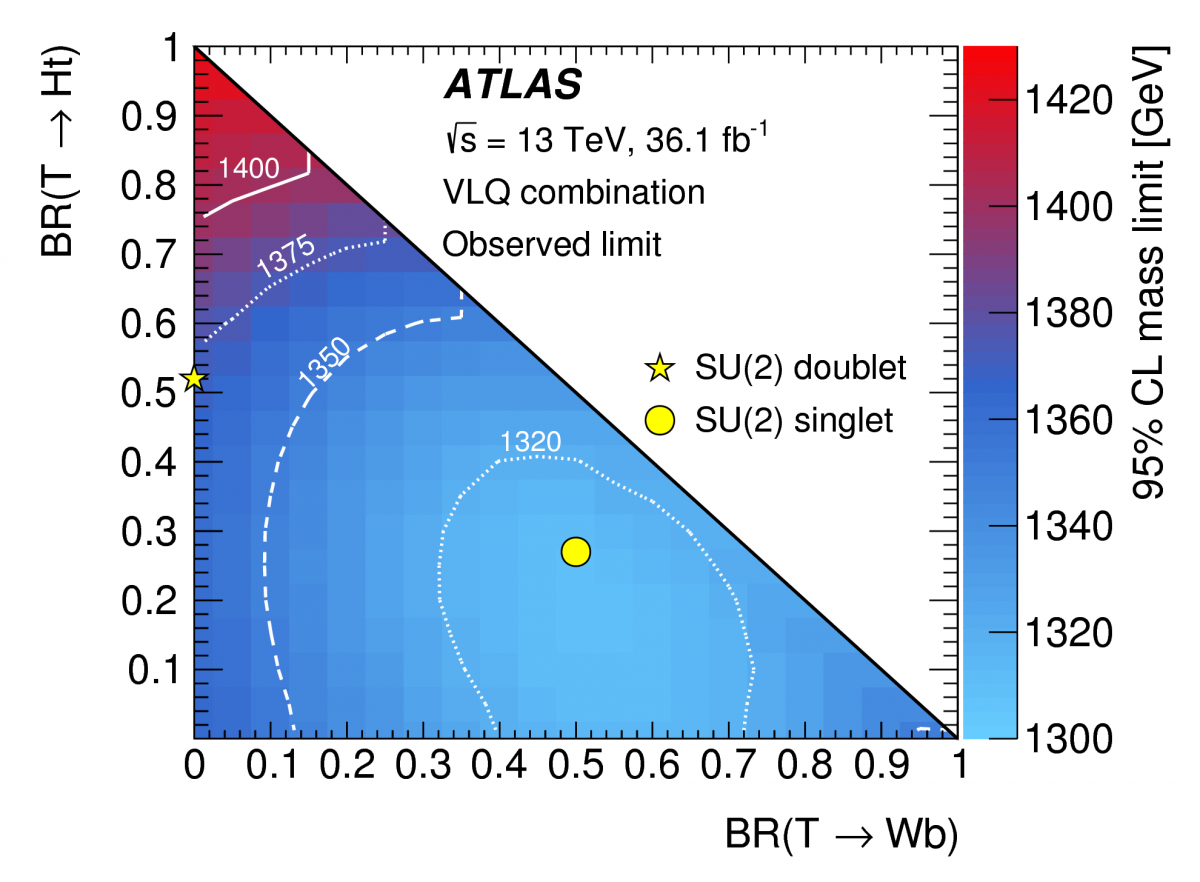Could a new type of quark fix the “unnaturalness” of the Standard Model?
8 August 2018 | By

While the discovery of the Higgs boson at the Large Hadron Collider (LHC) in 2012 confirmed many Standard Model predictions, it has raised as many questions as it has answered. For example, interactions at the quantum level between the Higgs boson and the top quark ought to lead to a huge Higgs boson mass, possibly as large as the Planck mass (>1018 GeV). So why is it only 125 GeV? Is there a mechanism at play to cancel these large quantum corrections caused by the top quark (t)? Finding a way to explain the lightness of the Higgs boson is one of the top (no pun intended) questions in particle physics.
A wide range of solutions have been proposed and a common feature in many of them is the existence of vector-like quarks – in particular, a vector-like top quark (T). Like other quarks, vector-like quarks would be spin-½ particles that interact via the strong force. While all spin-½ particles have left- and right-handed components, the weak force only interacts with the left-handed components of Standard Model particles. However, vector-like quarks would have “ambidextrous” interactions with the weak force, giving them a bit more leeway in how they decay. While the Standard Model top quark always decays to a bottom quark (b) by emitting a W boson (t→Wb), a vector-like top can decay three different ways: T→Wb, T→Zt or T→Ht (Figure 1).
Performing a combination of the individual searches has allowed ATLAS to search for vector-like tops with masses over 1200 GeV and to set the most stringent lower limits on its mass.

The ATLAS collaboration uses a custom-built programme to search for vector-like top pairs in LHC data. It utilizes data from several dedicated analyses, each of them sensitive to various experimental signatures (involving leptons, boosted objects and/or large missing transverse momentum). This allows ATLAS to look for all of possible decays, increasing the chance of discovery.
ATLAS has now gone one step further by performing a combination of all of the individual searches. While individual analyses are designed to study a particular sets of decays, combined results provide sensitivity to all possible sets of decays. These have allowed ATLAS to search for vector-like tops with masses over 1200 GeV. It appears, however, that vector-like tops are so far nowhere to be found. On the bright side, the combination allows ATLAS to set the most stringent lower limits on the mass of a vector-like top for arbitrary sets of branching ratios to the three decay modes (Figure 2).
Between these limits on vector-like top quarks and those on other theories that could offer a solution (like supersymmetry), the case for a naturally light Higgs boson is not looking good… but Nature probably still has a few tricks up its sleeve for us to uncover.
Links:
- Combination of the searches for pair-produced vector-like partners of the third-generation quarks at 13 TeV with the ATLAS detector (arXiv:1808.02343, see figures).
- See also the full lists of ATLAS Conference Notes and ATLAS Physics Papers.



